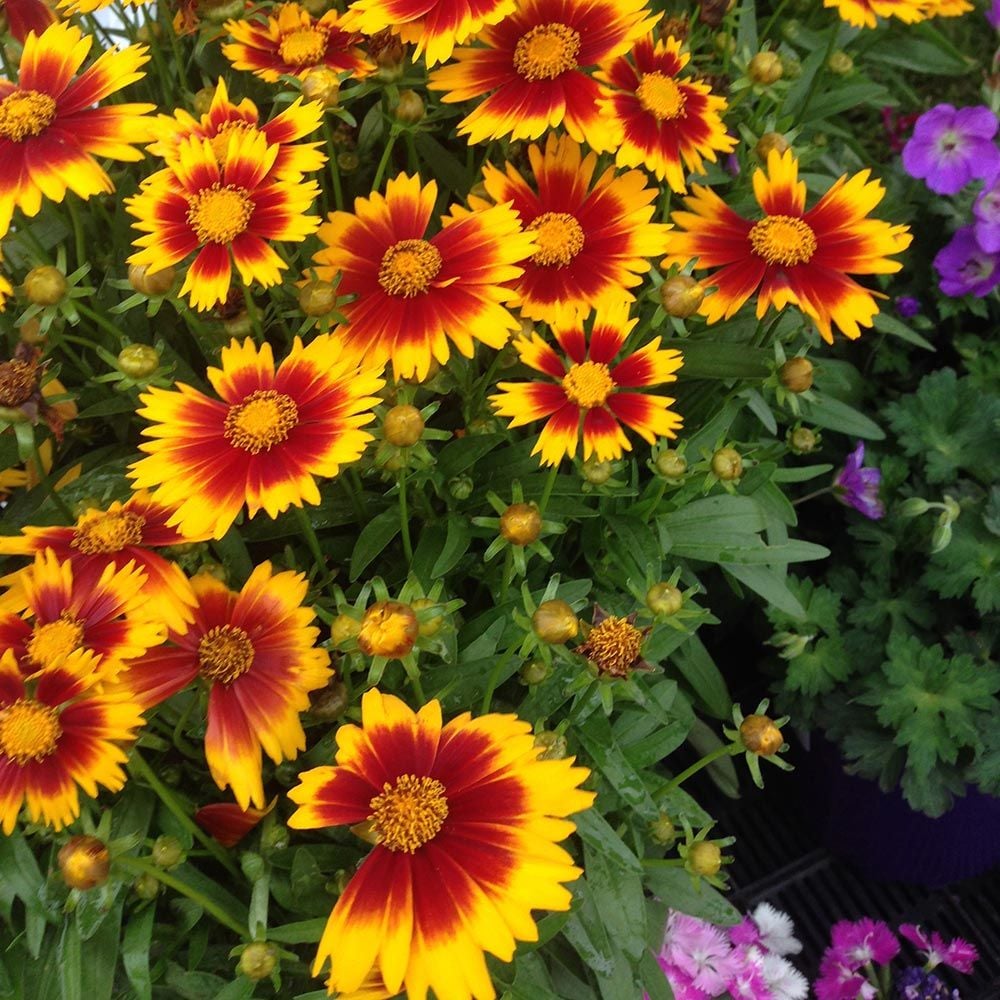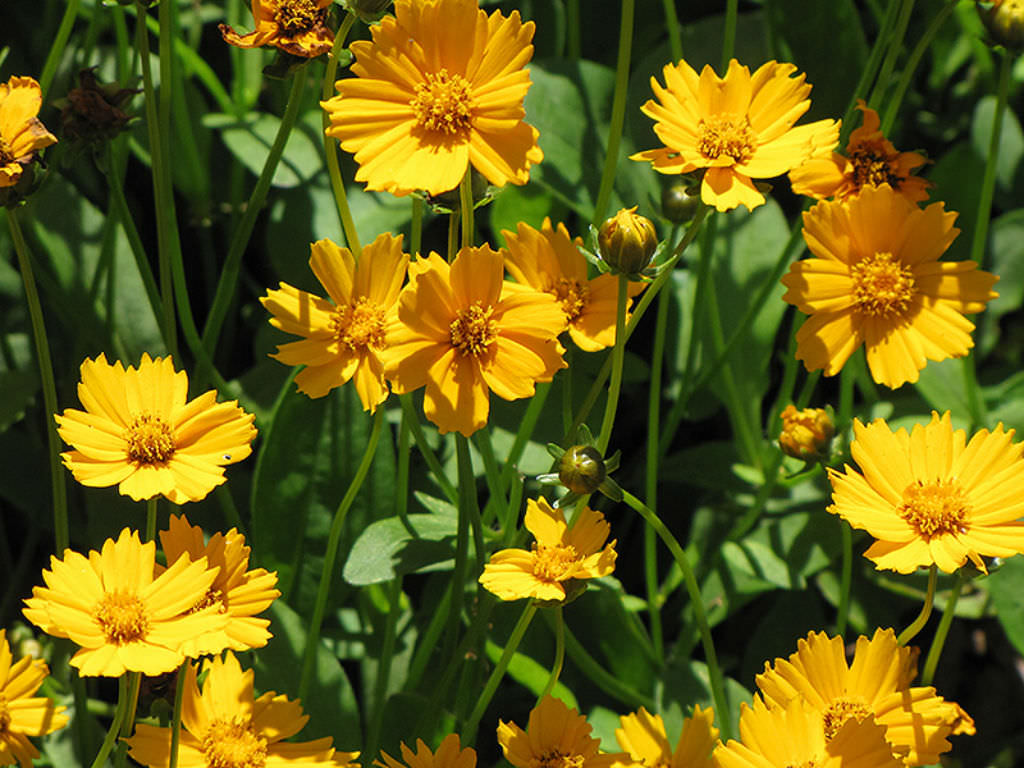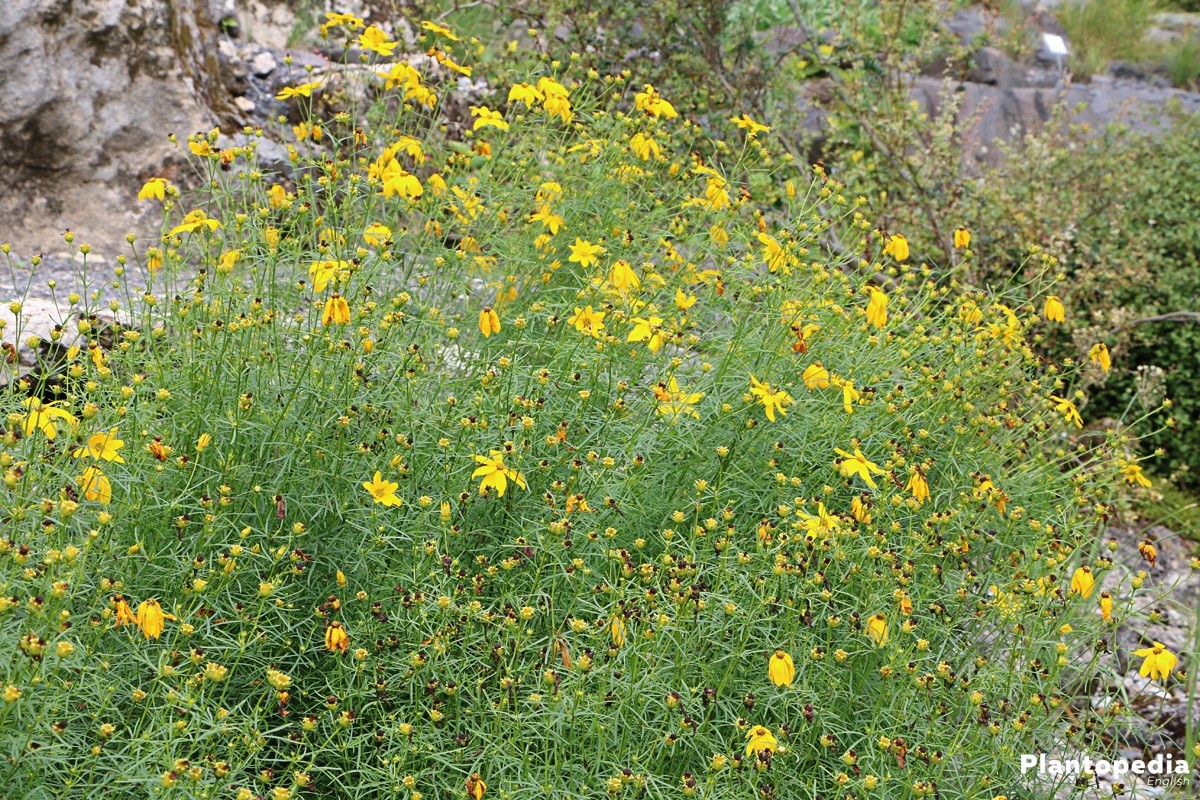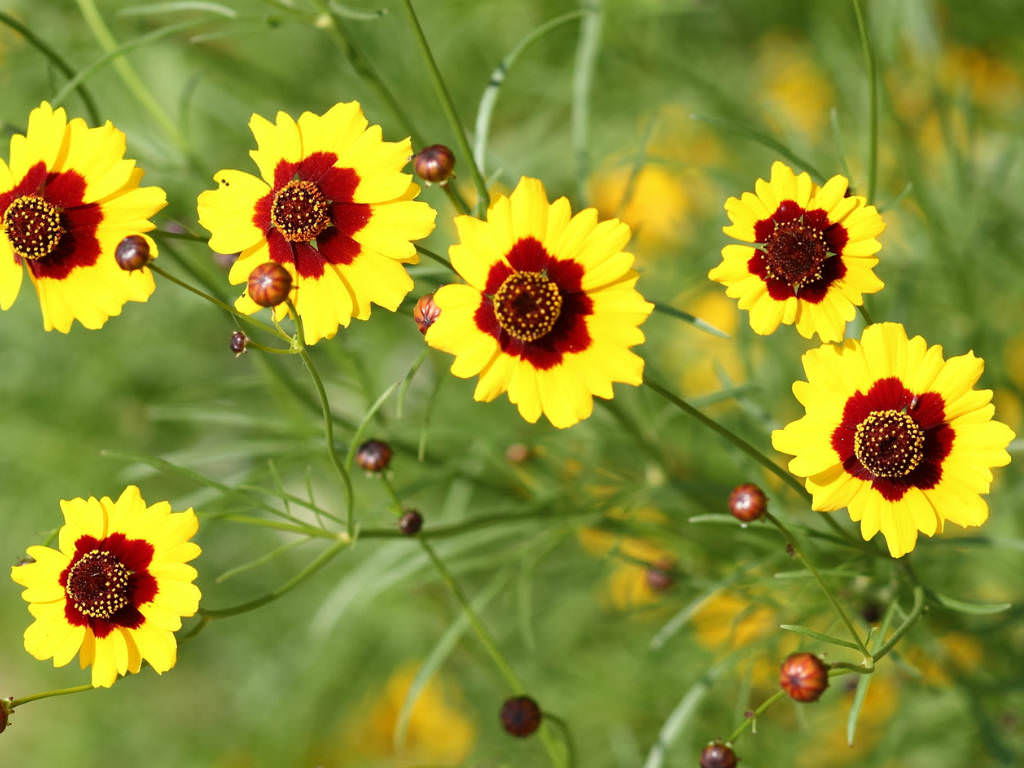Your Coreopsis care images are available in this site. Coreopsis care are a topic that is being searched for and liked by netizens now. You can Get the Coreopsis care files here. Find and Download all free images.
If you’re looking for coreopsis care images information linked to the coreopsis care topic, you have visit the ideal site. Our site always provides you with hints for seeking the maximum quality video and picture content, please kindly surf and locate more informative video content and graphics that fit your interests.
Coreopsis Care. Water about once a week to help the roots grow down. Using the usda hardiness zones will identify what soil and climate is preferred for different cultivars or species. Remove the mulch as soon as frost no longer threatens in spring. Water newly planted coreopsis regularly.
 Coreopsis Seeds Coreopsis Grandiflora Early Sunrise From outsidepride.com
Coreopsis Seeds Coreopsis Grandiflora Early Sunrise From outsidepride.com
Humidity these plants can tolerate high humidity as long as there is good air circulation and proper drainage. It has very low watering needs, especially during the colder months of the year. They get lanky in partial shade, although some afternoon shade is appreciated in hot summer areas. The dead growth should be cut back to the ground before new leaves appear in spring. Grandiflora with the former being a. It is necessary to promote soil nutrition.
May have problems with mildew, especially in coastal areas or areas with high humidity.
It has very low watering needs, especially during the colder months of the year. Coreopsis are native american prairie and woodland plants. It loves full sun but it will tolerate partial shade. This can also prevent reseeding if you want the plant to stay contained. Watering these plants is best done in the morning as the leaves can dry during the day. Grow coreopsis plants in your garden about 12 inches apart.
 Source: plantopedia.com
Source: plantopedia.com
To encourage additional blooms, you can deadhead the plants with a hedge trimmer after the blooms are finished. Don’t wait too long because damp mulch can invite pests and disease. Dig out around the plant and pull up the root ball. To encourage additional blooms, you can deadhead the plants with a hedge trimmer after the blooms are finished. Coreopsis are native american prairie and woodland plants.

Water about once a week to help the roots grow down. Humidity these plants can tolerate high humidity as long as there is good air circulation and proper drainage. Plant transplants 12 to 18 inches apart. Soil this is a hardy plant that thrives well in rocky or sandy soil of poor to medium quality. Grandiflora with the former being a.
 Source: pinterest.com
Source: pinterest.com
Tall coreopsis is drought tolerant. No other coreopsis winter care is necessary, as the plant will be in a dormant stage of growth. It generally thrives on slate shale, granite, sandstone, and limestone weathered in soils with ph values ranging from 5 to 8. Lanceleaf coreopsis can be split via division either very early in spring, or in fall well after blooming. Some tolerate poor, sandy or rocky soils.
 Source: mailordernatives.com
Source: mailordernatives.com
So, it’s a great choice for those of us that live in areas that have poor and rocky soils. Annual coreopsis growing in borders or meadow mixes may need protection from slugs while plants are small. In terms of watering, the dwarf coreopsis is a fairly simple plant to take care of. Add compost and/or sand to improve drainage before planting. Their ruggedness and profuse blooms have made them popular with plant breeders, and there are over 100 different species available, although not all are perennial plants.
 Source: birchfieldnurseries.com
Source: birchfieldnurseries.com
It generally thrives on slate shale, granite, sandstone, and limestone weathered in soils with ph values ranging from 5 to 8. Then use a shovel, garden knife, or saw to split the root ball. When planting, it is vital that the soil is kept moist to support the plant’s growth. Tall coreopsis is drought tolerant. Add compost and/or sand to improve drainage before planting.
 Source: worldoffloweringplants.com
Source: worldoffloweringplants.com
It prefers soil that is very low in organic matter so don’t add organic matter to your soil for this plant. Especially, it thrives best in soils with ph values ranging from 5 to 7 weathered granite. Add compost and/or sand to improve drainage before planting. Sowing plants in succession will allow for an abundance of growing coreopsis. Taller varieties may need staking or support, especially in windy sites.
 Source: garden.org
Source: garden.org
Water in the mornings if you can. They get lanky in partial shade, although some afternoon shade is appreciated in hot summer areas. Grandiflora with the former being a. It generally thrives on slate shale, granite, sandstone, and limestone weathered in soils with ph values ranging from 5 to 8. Using the usda hardiness zones will identify what soil and climate is preferred for different cultivars or species.
 Source: worldoffloweringplants.com
Source: worldoffloweringplants.com
Tall coreopsis is drought tolerant. Specifically, most experts agree that the coreopsis auriculata ‘nana’ prefers constant watering each week and more during the hot season. Their ruggedness and profuse blooms have made them popular with plant breeders, and there are over 100 different species available, although not all are perennial plants. Flowering in late summer this bright and lively plants include c. They need light for germination.
 Source: sakuratucson.com
Source: sakuratucson.com
How to plant coreopsis do not cover seeds; Be sure you check the maximum height of the variety you plant to ensure adequate space between and around the plants as they mature. It prefers soil that is very low in organic matter so don’t add organic matter to your soil for this plant. Their ruggedness and profuse blooms have made them popular with plant breeders, and there are over 100 different species available, although not all are perennial plants. Cover the seeds lightly with soil as they need light to germinate.
 Source: outsidepride.com
Source: outsidepride.com
Plant transplants 12 to 18 inches apart. Allow the soil to dry thoroughly before watering. May have problems with mildew, especially in coastal areas or areas with high humidity. Water about once a week to help the roots grow down. See our detailed and illustrated guide on.
 Source: housemethod.com
Source: housemethod.com
Don’t wait too long because damp mulch can invite pests and disease. How to plant coreopsis do not cover seeds; Sowing plants in succession will allow for an abundance of growing coreopsis. The flowers are on raised, long stems above the basal leaves and each plant forms a small clump. It generally thrives on slate shale, granite, sandstone, and limestone weathered in soils with ph values ranging from 5 to 8.
 Source: worldoffloweringplants.com
Source: worldoffloweringplants.com
This can also prevent reseeding if you want the plant to stay contained. Sowing plants in succession will allow for an abundance of growing coreopsis. Watering these plants is best done in the morning as the leaves can dry during the day. This can also prevent reseeding if you want the plant to stay contained. Deadheading the flowers ensures it does not become weedy.
 Source: thespruce.com
Source: thespruce.com
It generally thrives on slate shale, granite, sandstone, and limestone weathered in soils with ph values ranging from 5 to 8. Grow coreopsis plants in your garden about 12 inches apart. Remove the mulch as soon as frost no longer threatens in spring. Allow the soil to dry thoroughly before watering. Coreopsis tolerate poor soil, but not clay.
 Source: mygardenlife.com
Source: mygardenlife.com
Lanceleaf coreopsis can be split via division either very early in spring, or in fall well after blooming. Feed your plant manure during the spring season. Cover the seeds lightly with soil as they need light to germinate. Coreopsis do not require fertilizer to bloom and thrive though adding compost in the spring will keep the plants healthy. Water in the mornings if you can.
 Source: carolsteel5050.blogspot.ca
Source: carolsteel5050.blogspot.ca
When it comes to winterizing coreopsis plants, watering and mulching are the most important steps you can take. To encourage additional blooms, you can deadhead the plants with a hedge trimmer after the blooms are finished. See our detailed and illustrated guide on. How to care for coreopsis perennial varieties need little care once established. Annual coreopsis growing in borders or meadow mixes may need protection from slugs while plants are small.
 Source: sakuratucson.com
Source: sakuratucson.com
Add compost and/or sand to improve drainage before planting. No other coreopsis winter care is necessary, as the plant will be in a dormant stage of growth. You should also divide coreopsis if you notice that the center of the plant is beginning to die out or it starts to produce fewer or smaller flowers. Add compost and/or sand to improve drainage before planting. Their ruggedness and profuse blooms have made them popular with plant breeders, and there are over 100 different species available, although not all are perennial plants.
 Source: gardeningknowhow.com
Source: gardeningknowhow.com
Don’t wait too long because damp mulch can invite pests and disease. Specifically, most experts agree that the coreopsis auriculata ‘nana’ prefers constant watering each week and more during the hot season. So, it’s a great choice for those of us that live in areas that have poor and rocky soils. Coreopsis are native american prairie and woodland plants. Care of coreopsis may include misting the seeds for moisture.
 Source: gardenoid.com
Source: gardenoid.com
Coreopsis do not require fertilizer to bloom and thrive though adding compost in the spring will keep the plants healthy. Water about once a week to help the roots grow down. Propagation propagated through seed or division. Threadleaf coreopsis is an excellent pollinator plant, attracting bees, butterflies and other pollinating insects. Coreopsis do not require fertilizer to bloom and thrive though adding compost in the spring will keep the plants healthy.
This site is an open community for users to do sharing their favorite wallpapers on the internet, all images or pictures in this website are for personal wallpaper use only, it is stricly prohibited to use this wallpaper for commercial purposes, if you are the author and find this image is shared without your permission, please kindly raise a DMCA report to Us.
If you find this site good, please support us by sharing this posts to your own social media accounts like Facebook, Instagram and so on or you can also save this blog page with the title coreopsis care by using Ctrl + D for devices a laptop with a Windows operating system or Command + D for laptops with an Apple operating system. If you use a smartphone, you can also use the drawer menu of the browser you are using. Whether it’s a Windows, Mac, iOS or Android operating system, you will still be able to bookmark this website.






